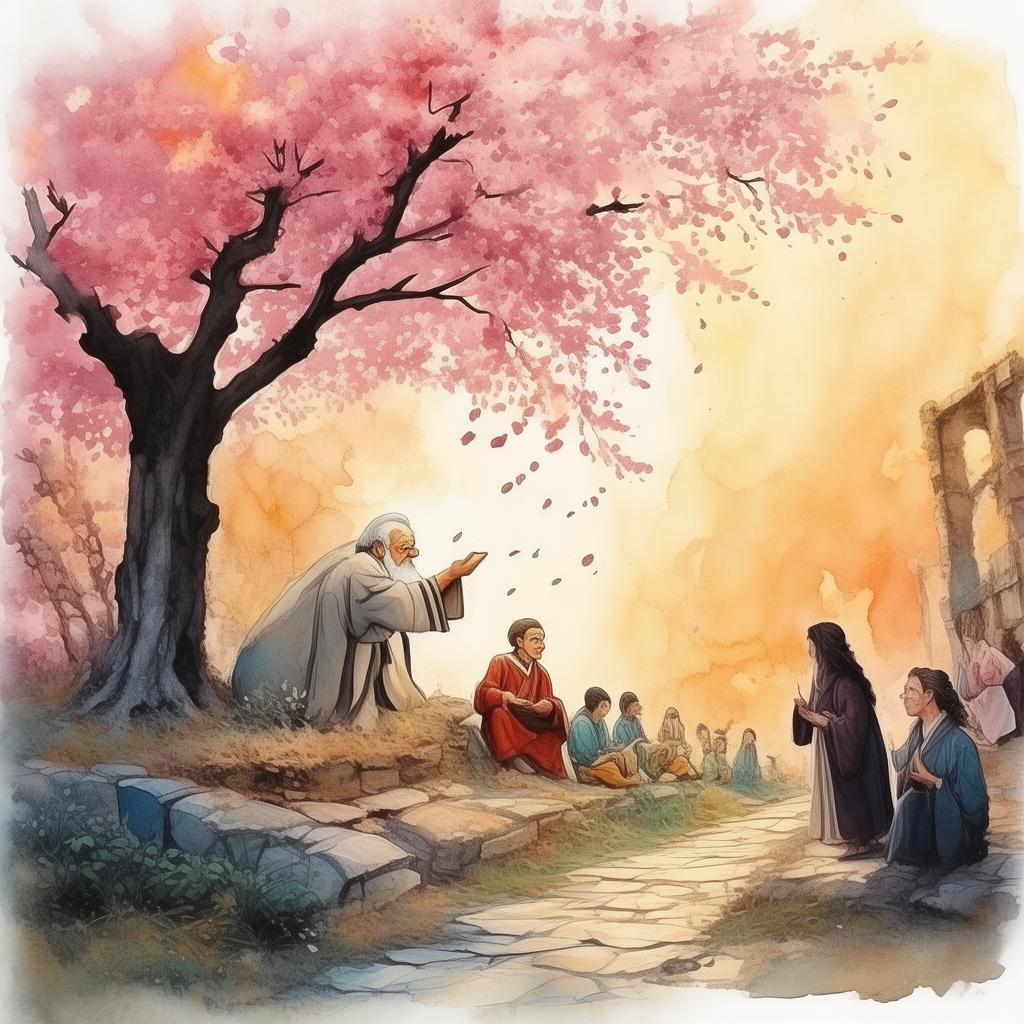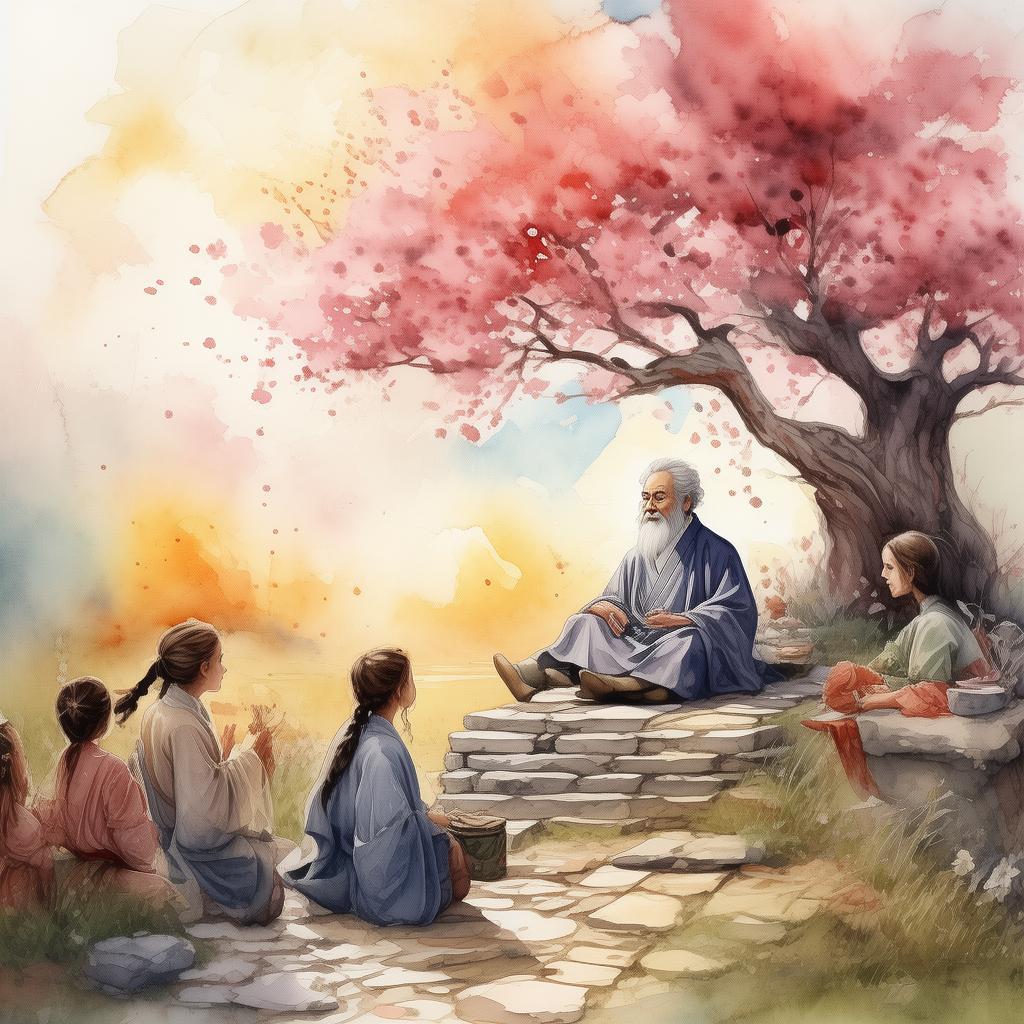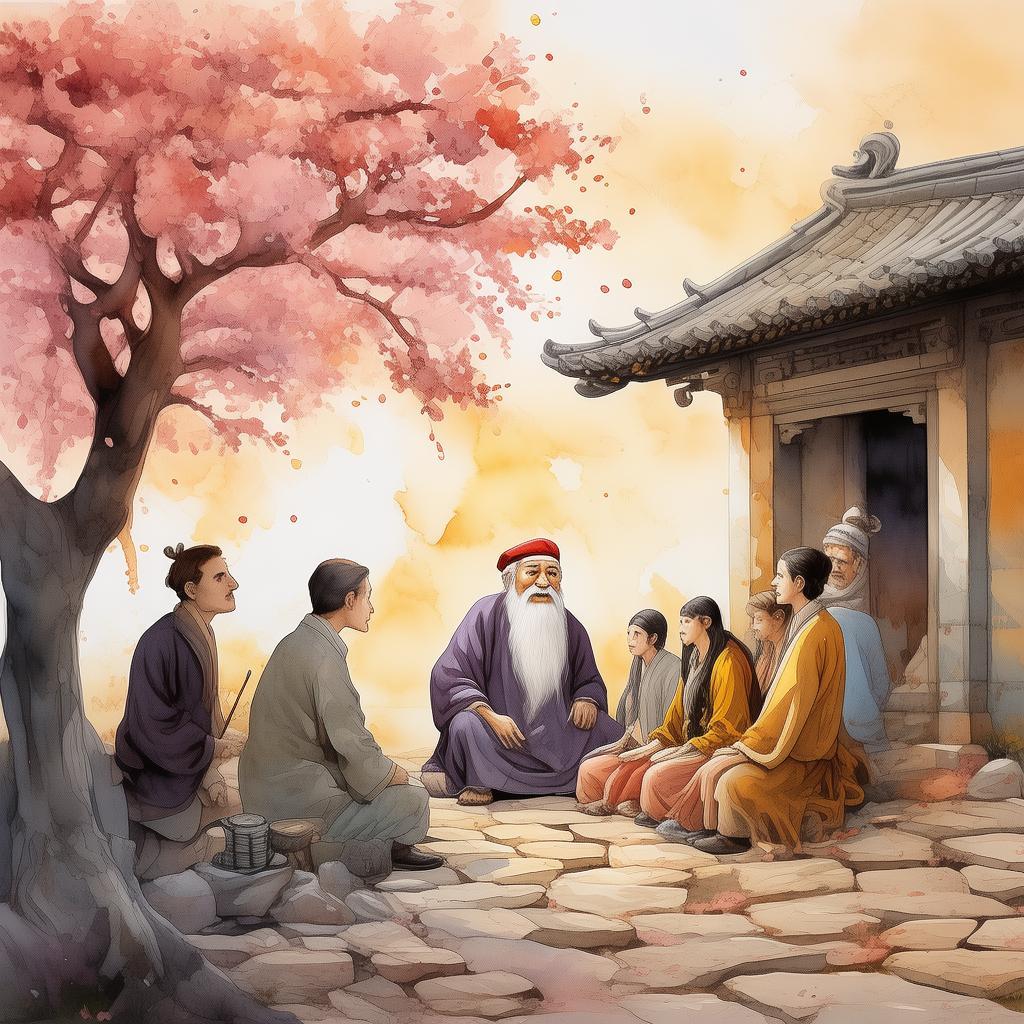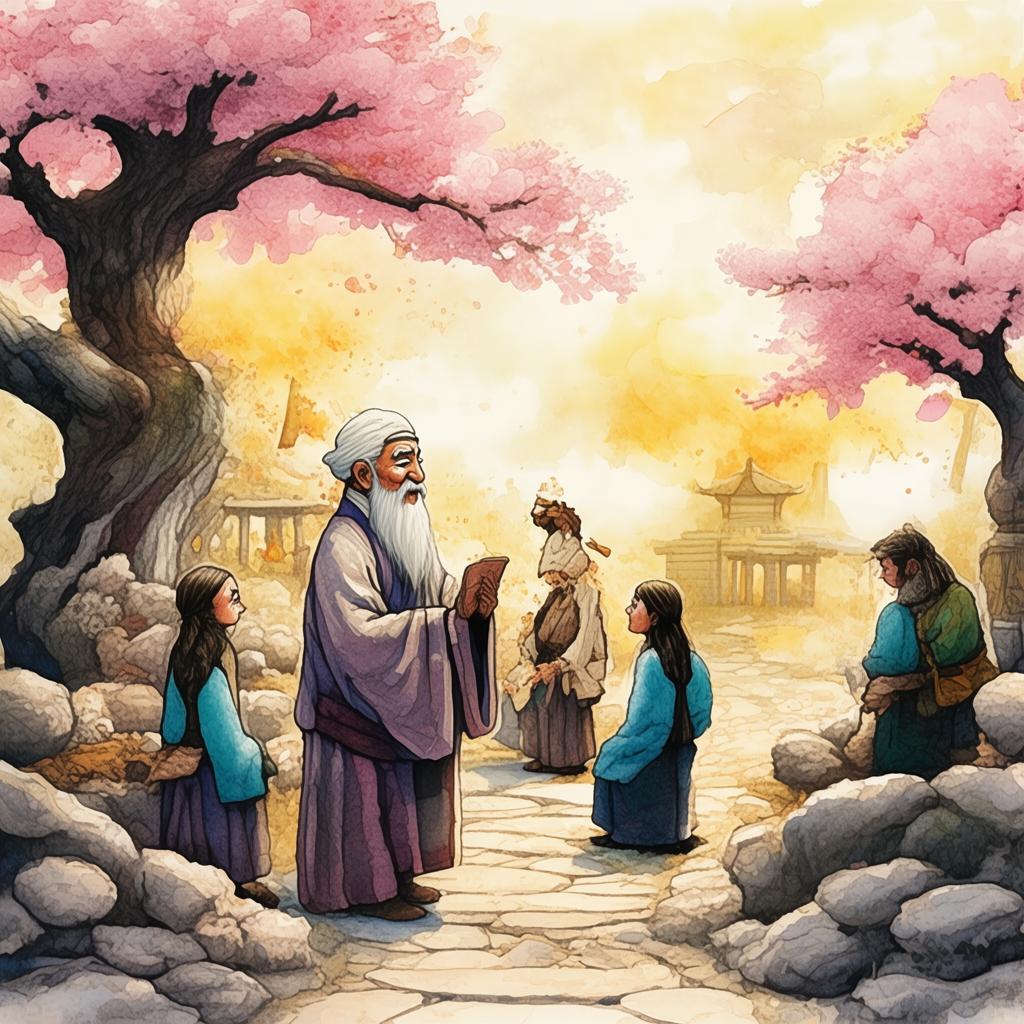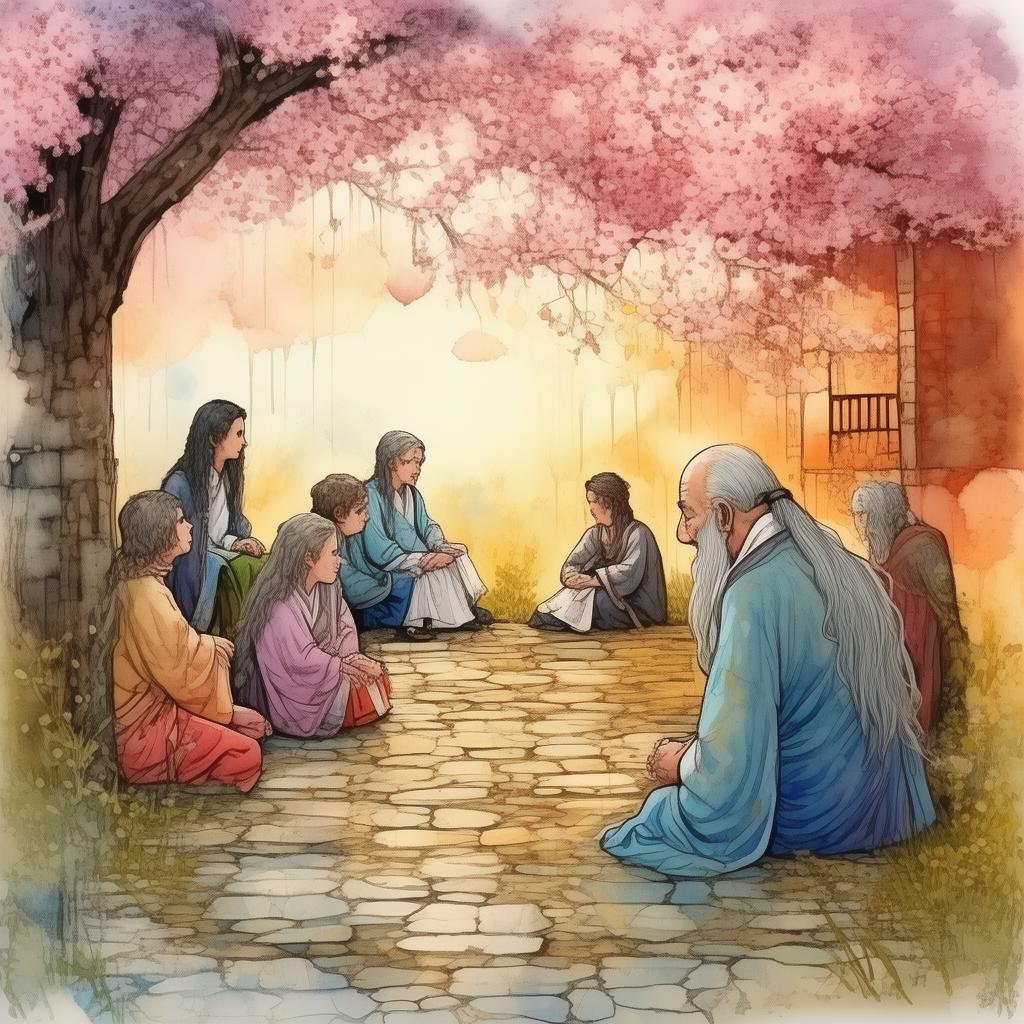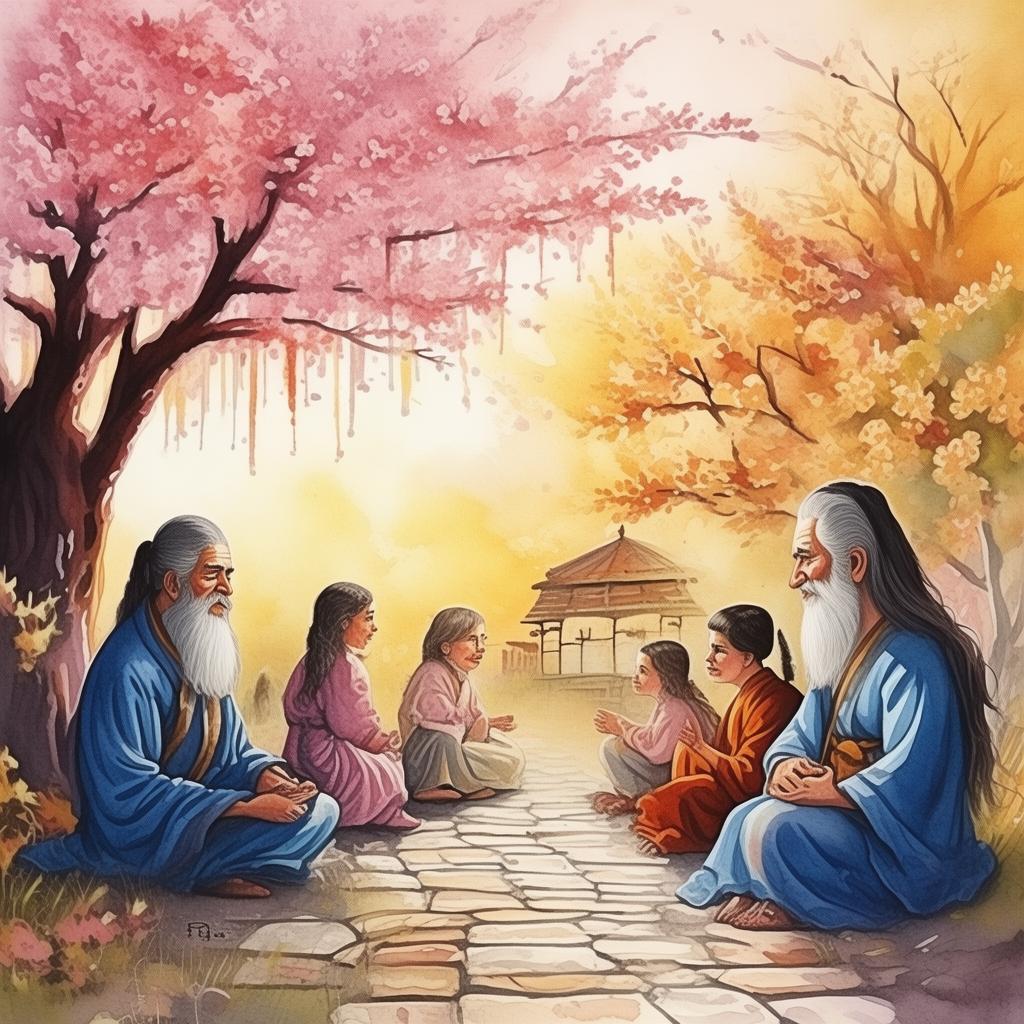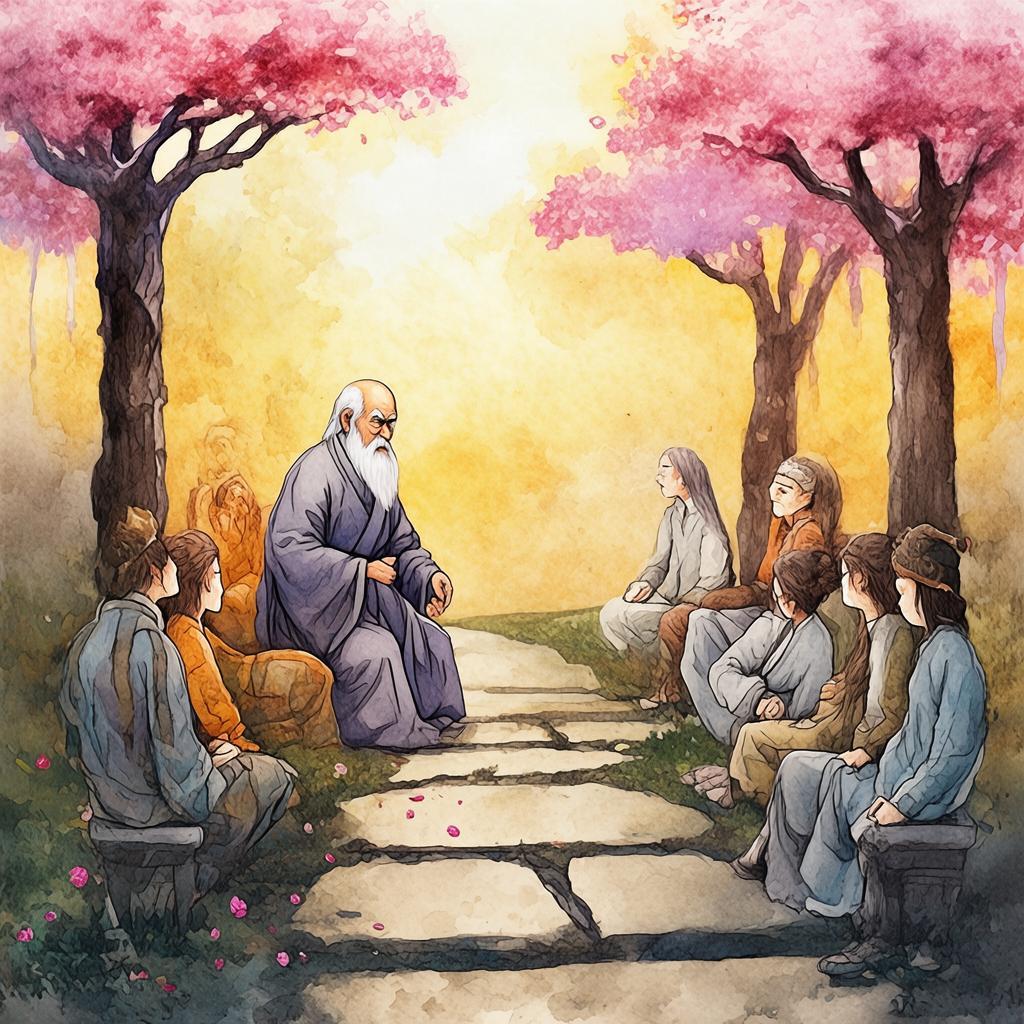The Paradox Pictorial: The Mysterious Tale of the Painted Idioms
In the bustling city of Liantong, nestled between the ancient mountains and the flowing rivers, there was a young artist named Ling. Her talent for painting was unparalleled, and her works often depicted scenes of serene beauty, capturing the essence of nature's splendor. But there was one peculiar aspect of Ling's art that intrigued those who knew her—the use of idioms as the focal points of her paintings.
Ling had a habit of painting idioms that were not only visually striking but also seemed to hold hidden meanings. Her friends often marveled at the paradoxes she captured in her paintings, as if each idiom were a riddle waiting to be solved. Among her most famous works was a series called "The Paradox Pictorial," which featured a collection of idioms that appeared to contradict themselves at first glance.
One day, while browsing through the local market, Ling stumbled upon an old, dusty book titled "The Idiom Chronicles." The book was a compilation of ancient idioms, each with a unique story and origin. Intrigued by the title, she bought the book and began to read, hoping to uncover the secrets behind her own paintings.

As she delved deeper into the book, Ling discovered that the idioms she had painted were part of a larger tapestry of forgotten wisdom. Each idiom, it seemed, was a clue to an ancient paradox that had been passed down through generations. The book spoke of a mysterious painter from the distant past, who had painted these idioms as a way to protect the knowledge they contained.
One of the idioms that caught Ling's eye was "The Whispering Willow," a painting that depicted a willow tree in full bloom, its branches swaying gently in the wind. The idiom, however, read: "The wind that shakes the tree is stronger than the tree itself." This paradoxical statement intrigued her, and she set out to uncover its meaning.
Ling's journey led her to an ancient temple, hidden deep within the mountains. The temple was said to be the resting place of the mysterious painter, and it was there that she found a series of paintings that depicted the life of the painter. The final painting showed the painter, an old man with a long beard, standing before a massive willow tree, his eyes filled with determination.
As Ling stood before the painting, she felt a sudden chill. The wind began to pick up, and the branches of the willow tree swayed more vigorously than ever before. In that moment, she realized that the paradox was not just a visual trick, but a reflection of the power of the wind that could bend and shape the tree, even though the tree itself was strong.
With this realization, Ling understood that the paintings were not just art, but a form of storytelling. The idioms were not meant to be taken at face value, but rather to challenge the viewer's perception and provoke thought. The true beauty of the paintings lay in the paradoxes they presented, inviting viewers to question and explore the depths of their own understanding.
Determined to uncover the remaining idioms, Ling returned to the market, seeking out the owners of the other paintings. Each painting led her to another clue, and soon she had pieced together a puzzle that revealed the true purpose of the "The Paradox Pictorial."
The final painting, "The Mirror's Reflection," depicted a young girl looking into a mirror, her expression one of confusion and wonder. The idiom beneath the painting read: "The reflection is true, but the truth is not in the reflection." This was the ultimate paradox, one that challenged the very nature of reality and perception.
Ling realized that the paintings were not just about the idioms themselves, but about the journey of self-discovery. They were a reminder that sometimes, the truth lies not in what we see, but in what we choose to believe.
As the story of "The Paradox Pictorial" spread through Liantong, people began to see the world around them in a new light. The paintings became a source of inspiration and a reminder that sometimes, the most profound truths are hidden in the most unexpected places.
In the end, Ling's journey through the "The Paradox Pictorial" taught her that the world was full of mysteries waiting to be uncovered, and that the pursuit of knowledge was a journey of endless discovery. Her paintings became a testament to this truth, inviting viewers to join her on a quest for understanding and self-awareness.
✨ Original Statement ✨
All articles published on this website (including but not limited to text, images, videos, and other content) are original or authorized for reposting and are protected by relevant laws. Without the explicit written permission of this website, no individual or organization may copy, modify, repost, or use the content for commercial purposes.
If you need to quote or cooperate, please contact this site for authorization. We reserve the right to pursue legal responsibility for any unauthorized use.
Hereby declared.

